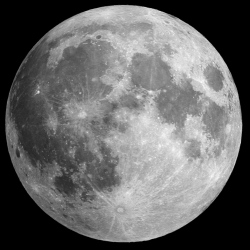
Around 4.5 billion years ago, when the solar system was still in its infancy, a Mars-sized planet collided with the proto-Earth and blasted our baby planet to smithereens. Earth’s rocks did not just melt; they vaporized, the very elements in those rocks turning into gas the way boiling water turns into steam.
Eventually, the remains of the original Earth cooled and settled down, condensing to once again form a solid planet. The leftovers formed the moon. That’s the latest twist in the decades-old story about how Earth’s moon came to be, and it’s based on new measurements of elements in both worlds.
The moon, our first friend, is more than a familiar fixture in the night sky; it dictates the slosh of tides, stabilizes Earth’s rotation, and might contribute to earthquakes. It is also the best place we have, other than Earth, for studying the formation of rocky worlds. Scientists are still unsure how it formed, in part because it’s hard to reconcile the moon’s chemical composition with the origin stories our computers tell.
In the 1970s, scientists proposed the moon formed from a grazing collision with a Mars-sized world. Earth’s surface would have liquified and part of it would have sloughed off. The moon coalesced from that debris and leftover pieces from the impactor, a scenario which came to be called the giant impact hypothesis. But analysis of moon rocks returned home after the Apollo missions suggested it can’t be that simple. The isotopic compositions of elements in Earth and moon rocks are the same. That would mean the Earth and the Mars-sized impactor were the same, too, and that’s very unlikely.
To explain this similarity, scientists needed to come up with a way to make the moon mostly from the Earth, and not the impactor, says Kun Wang, a geochemist at Washington University in St. Louis. He was intrigued by a new computer model that debuted this spring at the annual Lunar and Planetary Science Conference. In this model, the Mars-sized object hit Earth with such violence that the impactor and Earth’s mantle vaporized.
“Maybe the core is still solid, but the mantle, and the Mars-size planet itself, all vaporized,” Wang told Popular Science. “Earth and the Mars-size planet, after the impact, will evaporate entirely.”
